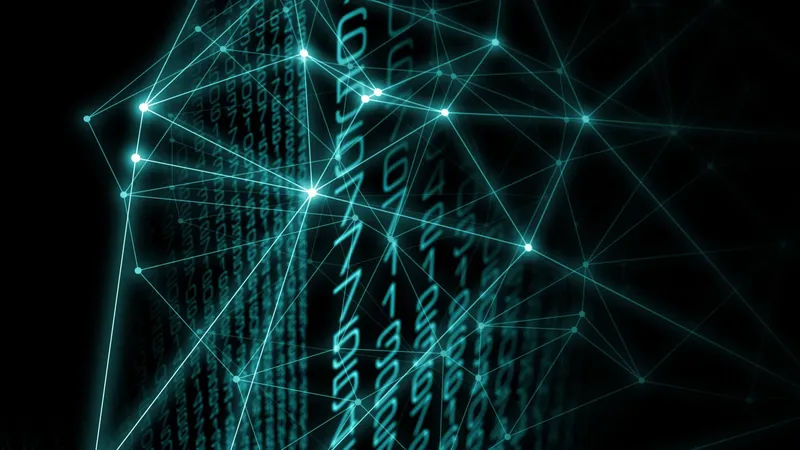
Unlocking the Universe: Quantum Dice Create True Randomness
2025-06-23
Author: Nur
What Makes True Randomness So Elusive?
In a world dominated by algorithms, can we trust that random numbers are actually random? Classical computers generate pseudo-random numbers, which can be manipulated or predicted by someone savvy enough to understand the algorithm. Even a coin flip, while seemingly random, can have underlying biases.
Debunking Einstein: Nature's True Randomness Revealed
According to physicist Krister Shalm from the National Institute of Standards and Technology (NIST), true randomness is unpredictable. Famous physicist Albert Einstein once claimed, "God does not play dice with the universe," but recent discoveries in quantum mechanics have proven him wrong. Quantum experiments, particularly the Bell test, reveal an interesting source of true randomness.
The Quantum Leap: Transforming Experiments into Public Utilities
Shalm's team is on a mission to make this quantum randomness accessible to everyone. They developed the Colorado University Randomness Beacon (CURBy), which generates and broadcasts random numbers on a daily basis. This random number service is based on the Bell test, ensuring that the results are not just random but also verifiable.
Harnessing Entangled Photons for Game-Changing Randomness
At the core of CURBy lies the measurement of entangled photons. When separated, these photons exhibit correlations that classical physics can't explain. By measuring their polarizations, researchers produce truly random results—showcasing what Einstein dubbed as "spooky action at a distance." This unprecedented approach makes CURBy the first random number generator service that uses quantum nonlocality.
Revolutionizing Randomness with Provable Certainty
"CURBy represents a significant milestone in randomness generation," highlights Shalm. Unlike traditional random number generators, CURBy's results are certifiable, offering a level of transparency never seen before. NIST's groundbreaking experiments in 2015 and subsequent advancements laid the groundwork for this innovative technology.
How CURBy Works: The Mechanics Behind the Magic
The process is fascinating: entangled photons are generated in a nonlinear crystal and travel through optical fibers to separate labs. Their polarizations are measured multiple times per second, yielding a random output. In its initial operation period, CURBy achieved a staggering 99.7% success rate.
Blockchain Technology Meets Quantum Physics
Accompanying this advanced system is the Twine protocol, a blockchain-based method that ensures every step in the randomness generation is traceable. By assigning a unique hash to each data set, the protocol creates a secure, tamper-proof network of random numbers.
A Tool for the People: CURBy’s Potential Use Cases
Curiously versatile, CURBy can aid in numerous applications, from selecting jury candidates to conducting public lotteries. It makes science not only fascinating but also practically beneficial to society.
Empowering Innovations Through Open Source
Gautam Kavuri, a graduate student involved in the project, emphasizes the beauty of this initiative: it's open-source, allowing anyone to verify the process or contribute to creating their own random number generators. In this way, CURBy isn’t just a scientific endeavor; it's a leap toward democratizing technology.
The Future of Randomness Awaits!
As CURBy continues to operate, it stands as a testament to the exciting intersection of quantum science and real-world application, making randomness at its core more accessible, trustworthy, and enlightening.




 Brasil (PT)
Brasil (PT)
 Canada (EN)
Canada (EN)
 Chile (ES)
Chile (ES)
 Česko (CS)
Česko (CS)
 대한민국 (KO)
대한민국 (KO)
 España (ES)
España (ES)
 France (FR)
France (FR)
 Hong Kong (EN)
Hong Kong (EN)
 Italia (IT)
Italia (IT)
 日本 (JA)
日本 (JA)
 Magyarország (HU)
Magyarország (HU)
 Norge (NO)
Norge (NO)
 Polska (PL)
Polska (PL)
 Schweiz (DE)
Schweiz (DE)
 Singapore (EN)
Singapore (EN)
 Sverige (SV)
Sverige (SV)
 Suomi (FI)
Suomi (FI)
 Türkiye (TR)
Türkiye (TR)
 الإمارات العربية المتحدة (AR)
الإمارات العربية المتحدة (AR)